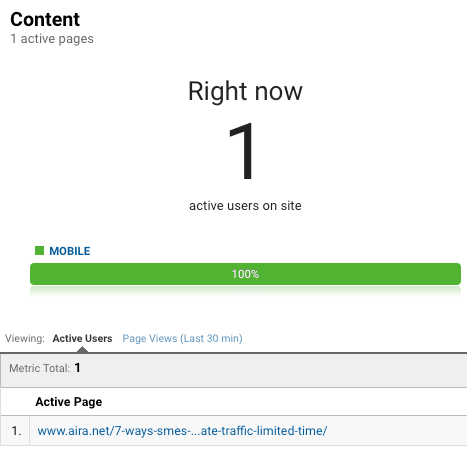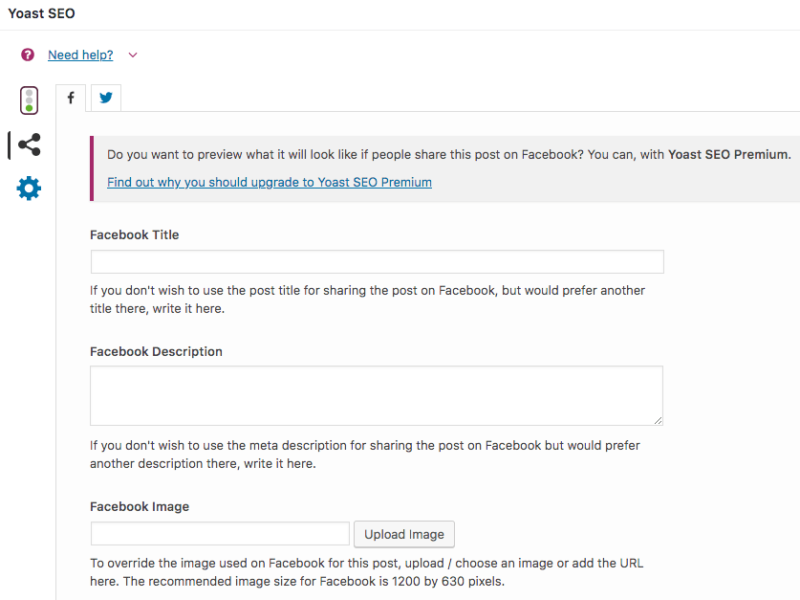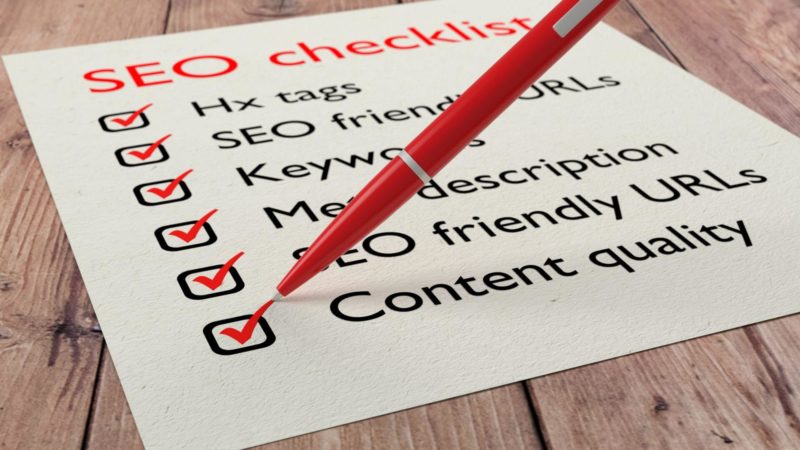After you’ve chosen the right execution for your link-building campaign and you’re getting ready to launch it, you can’t forget about search engine optimization (SEO). It’s easy to get caught up in the campaign itself, but putting aside 15 or 20 minutes to make sure your SEO points are covered can pay off by leading to more traffic, engagement and value to the business.
Here’s a checklist of key items and how to SEO them so your content campaign runs smoothly and supports your ranking efforts. While ranking may not be the primary goal of your content campaign, you should at least take care of basic on-page SEO elements. It takes little time and could pay back very well over time. Let’s start with on-page SEO.
Page titles
Yes, I know, this is a basic one, but you’d be surprised how many people forget about optimizing their page titles. If you’re doing a full page makeover with custom HTML or cascading style sheets, a page title needs to be manually defined since you’re not using a template.
There are two main things to think about here:
- Remember the page title shows up in Google search results and could also be used on social channels if open graph tags aren’t present. You want to have a title that is catchy and entices someone to click through to your content piece.
- If you’re building a piece of content in hopes of attracting links to it, chances are it could rank for some reasonable-volume keywords. You may as well take time to do basic keyword research and optimize your page title. If you don’t have a convenient, fully relevant keyword to optimize the page for, add a couple of secondary phrases if you can. Try to avoid accidentally targeting a keyword being used by another page and cannibalize rankings.
Meta description
While it won’t be as impactful as a page title when it comes to rankings, you should still take a minute to write a clear, accurate and enticing meta description which reflects your content piece. This can help improve click-through rate, as well as being used by social platforms if you haven’t defined open graph tags. More on this below.
Images and text
An infographic is a popular example of an image using text. I see lots of examples of static infographics which contain a lot of text. Not only is that not the point of an infographic (that’s for another day), but from an SEO perspective, who puts text within an image?
A small amount of text is unavoidable when it comes to infographics, particularly with small snippets or small paragraphs of text, but if you’re using a lot of copy, you may want to rethink using an infographic in the first place.
If you find yourself producing a static graphic which contains lots of text, consider creating a standard HTML page which is supported with images and icons instead of one long graphic. A long-form content page may be better and can definitely be optimized for rankings and traffic generation over a static image.
Internal links
This is another important one that can be overlooked. There are two types of internal links you need to think about when it comes to optimizing on-page content.
Links to key pages. Assuming your content-led link building is successful, you’re going to secure links to content on your site. You should take the opportunity to filter this link equity to key pages if possible. There are a few ways you can do this:
- Include a navigation menu at the top of the page. This can include links to key categories. You should be careful the menu doesn’t overshadow your content piece and is as discreet as possible. An alternative is to launch the content and then add a navigation menu after your outreach has settled down.
- Include links within the copy. If you have large blocks of text within your content, look for opportunities to link to key pages on your site from within that content. The key here is to make it natural and not shoehorn links where they don’t make sense.
- Include a footer which links to key pages. While not as optimal as links farther up the page in more prominent positions, a footer means you’re not compromising the content piece itself or distracting from it, but you’re still filtering link equity to key pages.
Links from key pages. Links from key pages on your site are a good way to help pages that do not typically support a lot of content or may not be part of the main navigation. In cases like this, it can easily be argued that Google may not value the content (or the links pointing to it) anywhere near as much as it could. If a page isn’t prominently linked to internally, the link equity doesn’t flow, and it may not rank well. Even if this page accumulates lots of external links, it won’t have the ability to pass that link equity unless there is a strong internal linking structure.
Canonical tags
This issue usually takes care of itself if you’re using a good content management system which is set up correctly, but there can be a problem if you’re using a custom template of some kind. Not having canonical tags at all isn’t the end of the world, but you need to check if they are available, being used correctly and pointing to the correct URL. There are a few subtle things to watch for, such as:
- Http vs. https.
- Www. vs. non-www.
- Trailing slash vs. non-trailing slash.
Google can sometimes figure out mistakes like this and ignore the canonical tag, but a quick check when you’re developing the piece or shortly after launch will ensure that there aren’t any mistakes.
Dataset Schema
If you’re presenting a content piece which contains a dataset of some kind, you may want to consider implementing the appropriate Schema markup so that search engines can understand the context of your page. Then, if the dataset is understood and the page is trusted enough, you may also benefit from rich snippets in Google.
Images
If you’re launching a content-led link-building campaign, it will probably have some strong visual elements, including images and custom icons. If you don’t optimize them correctly, this can slow down your pages and add a lot of image bloat to a page.
At a basic level, you should be compressing all images, which will help with page load times. This is important if you’re reaching out to bloggers and journalists who are likely to open your content on their mobile devices, which may not have fast connections.
Also, be sure to take a minute to name your files and optimize the image ALT text to help Google understand them.
Tracking and measurement
Tracking the success of your content piece is an absolute must, and you have a few options for how to do this. Besides basic tracking, you have a few options for integration with other channels, which you should take advantage of if you can. Let’s start with the basics.
Google Analytics/GTM code. This is a classic, and it’s one that I’m sorry to say I’ve missed on more than one occasion. There is nothing worse than seeing a piece of content become very successful but see this in Google Analytics:

Ugh. Sure, you can still measure the new inbound links, but you may have missed a boatload of traffic that you should have been tracking. Some of that traffic may have moved over to your main website and may have engaged, or even converted into a lead or a customer, but you’ll never know, and you’ve lost that data forever.
Aside from checking during the testing phase, there are a few ways to test that Google Analytics is working correctly after a piece has launched.
The simplest option is to go into real-time analytics, go to the content section and see if your article is showing up. If traffic to the piece is low, click on the content. You should see it show up and look something like this:

Another way is to use a plug-in or Chrome extension such as Tag Assistant or GA DeBugger, which can tell if Google Analytics code is present on a page or not.
Remarketing tags. If you’re running any kind of paid search or social campaigns, you should ask the appropriate team for a remarketing code that allows you to put all visitors to your content into a list which you can target in the future.
This could mean targeting them with ads using display advertising or in their social feed on Facebook. There are a couple of ways you can use this kind of list:
- Targeting people with ads to come back to product or category pages on your website if the content is linked to one of them.
- Targeting people with ads for future content pieces if they are on similar topics to try and drive more engagement and traffic.
This requires little effort, and it’s easy to implement if you have the tracking code, especially if you use Google Tag Manager to deploy the tags.
Social
Open Graph tags. While social media shares may not be a primary goal for your content campaign, there is a good chance it will be shared if the content is popular. If this does happen, you’re more likely to generate additional shares and traffic if the image, title and description are customized for social.
It’s worth taking a bit of extra time to have images formatted for social and adding custom Open Graph tags which contain a good title and description. If you don’t have these in place, then most social platforms will use the page title and meta description instead, which may not be terrible, but there is a chance that it won’t be optimized.
Your CMS may provide the option to define Open Graph tags within it, which often makes things a lot easier. For example, if you’re publishing using WordPress and use the Yoast SEO plug-in, you’ll see these options at the bottom of your post or page:

You also have the option to set Twitter descriptions and images here, which is worth doing, too.
Contributing authors are invited to create content for Search Engine Land and are chosen for their expertise and contribution to the search community. Our contributors work under the oversight of the editorial staff and contributions are checked for quality and relevance to our readers. The opinions they express are their own.




